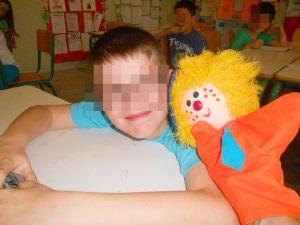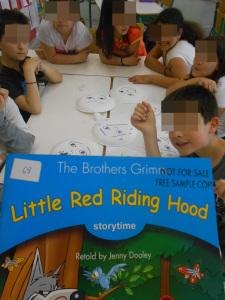Acknowledgement
Special thanks, to my dear friend and colleague, Maria Papadimitriou ,who inspired me to work on feelings, during her engaging presentation, in one of our local “English Teachers Association” seminar events, few years ago. This article, is her ideas, adapted and put into practice, in my class. These lesson plans, were great success in my class. They could work in yours, too.
Working on Feelings
Aphrodite Gkiouris, Greece

Aphrodite Gkiouris, has been teaching for a large number of years and have attended numerous ELT professional development events in Greece and abroad. She is an English teacher in a State Primary School in Greece. Her current interests, lie in blogging about ELT,creative teaching and NLP. E-mail:aphro.granger@gmail.com
Blog: aphrogranger.wordpress.com “ELT inspired”

Menu
Day 1 - Lesson plan
Day 2 - Lesson plan
Conclusions
Useful sites

Step 1
Students learn and sing any feelings song-s.The songs I used with my students,can be found in: www.preschoolers.com/music-station09/feelings-songs-april.shtml
What we need: a puppet,a softball,a CD player,paper plates,straws, a stapler, feelings flashcards, a "feelings" dice or spinner, a feelings check- in board or a poster.
Language:happy, sad, hungry, thirsty, tired,angry,scared, how are you feeling, today?, Are you...? , Yes, I am, No, I am not.
Lesson 1
Warm up-5 min
The puppet role plays a small dialogue and presents the feelings vocabulary to the students!

Task 1
The feelings check-in board
The puppet, asks each student, how he/she is feeling.Then, the puppet calls out students' names and gives each of them a clothespin, with their name on and asks them to tag it on the picture which is their feeling at the moment, on the feelings check-in board or poster.

Task 2-10 min
Students, listen to "Hello, how are you" song or any other similar one .The song I used with my students, can be found here:
rcel.enl.uoa.gr/peap/b-taksi/kyklos/how-are-you-feeling-today
Task 3
Students, make different feelings puppets, using paper plates and straws.Alternatively, they can make masks,using face templates they can find online.

End of the lesson-5 min
The puppet, asks students "How are you feeling NOW"? Students, spot the changes in their mood.
The students, imitate their feeling and then , change the position of the clothes pin on the feelings poster, if their feelings have changed ! They may use, more than one clothespins.

Warm-up - 2 min
The teacher, uses flashcards, to revise happy, sad, tired, hungry, thirsty and to add angry, scared, hot, cold!
Task 1-10 min
A softball game
The teacher, throws the ball to students and asks: " How are you feeling, today"? Students, reply.

Task 2- 10 min
The teacher, uses a feelings dice or spinner ( I used the beautiful spinner , my partner and friend in Taiwan, Annie Tsai had sent me ) and asks the students to play a miming game . Students, mime the feeling on the dice/spinner and their classmates try to guess.

Task 3-10 min
Story reading: " Little Red Riding Hood and the Wolf"
As students listen to the story, they are asked to raise their paper plate masks, to identify their feelings, in each different stage.

End of the lesson- 10 min
Students, play the "How are you feeling Mr Wolf" playground game.
Each time the players ask Mr Wolf this question, he answers with a feeling word. All the players , have to imitate his feeling!
Finally, the Wolf says, " I am Hungry"! When he does, all students rush away and run all over the playground, trying not to get caught by the Wolf! Whoever gets caught first, becomes the Wolf in the new round.

I strongly believe that, educating a child today, involves not only teaching them worthwhile facts and figures, but also providing them with the skills they’ll need to enjoy a rich and successful life, whether that means preparing them for the unpredictable workforce of the future or just empowering them with the ability to solve any problems they may encounter but also, develop rapport, empathy and self esteem…. One more such skill – and one that is often mentioned by academics, notable business people and parents alike – is creativity.

www.naeyc.org
www.mce.gr (Emotions Museum of Childhood in Athens)
www.e-phychologist.gr
www.phycology-today.gr
www.eslflashcards.com/preview.php?id=14

Please check the Methodology & Language for Primary course at Pilgrims website.
Please check the Practical Uses of Technology in the Classroom course at Pilgrims website.
Please check the Practical Uses of Mobile Technology in the Classroom course at Pilgrims website.


|